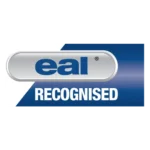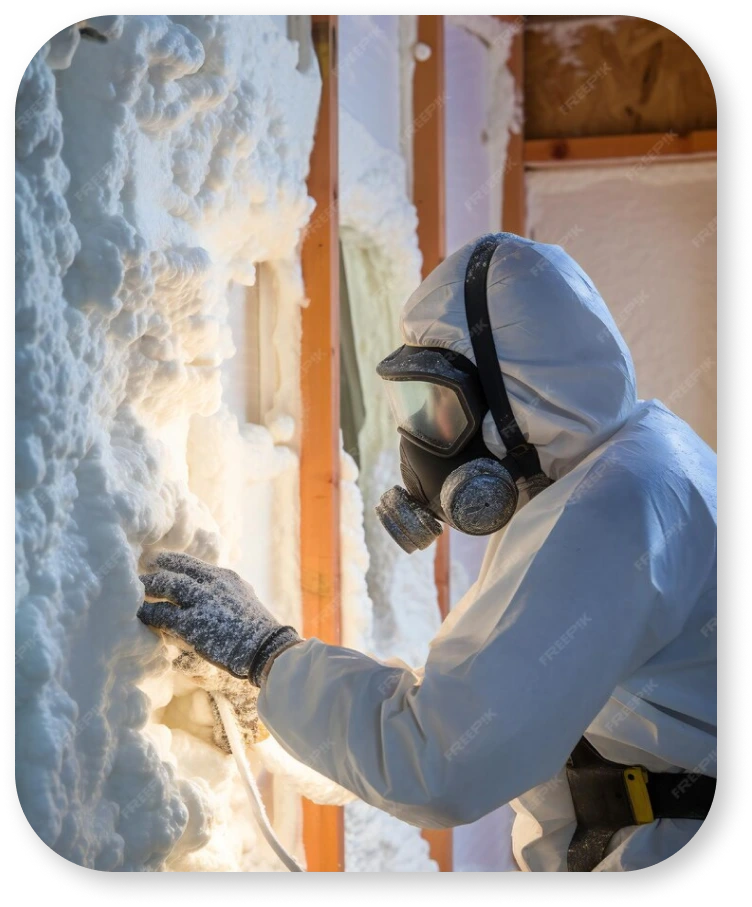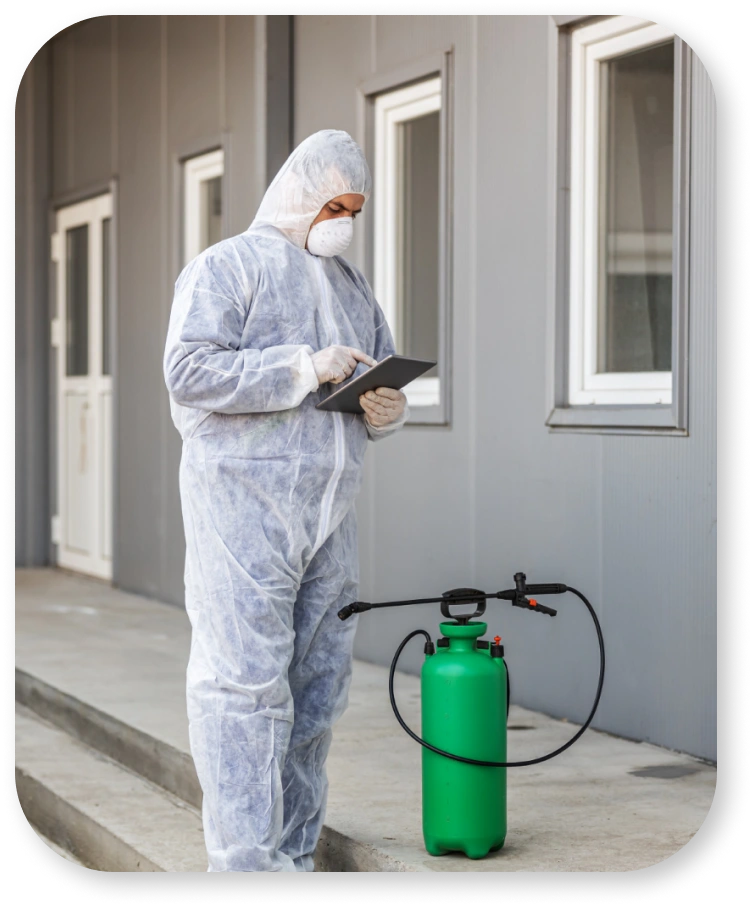Fire Risk Assessment for Flats in London
A fire risk and hazard assessment in flats is a certified procedure that ensures their safety and issues a risk-free living environment notice for the occupants. It is a mapped process to access all possible measures that can start a fire, such as faulty wiring and unattended kitchen stoves. These inspections not only guarantee a safe place for residents to live in but also put landlords and managing agents in a legally accepted and approved position. As UK laws require every homeowner and property holder to remain compliant with fire safety laws, these fire risk assessments on flats help you to stay in line with those laws.
Affordable Pricing
Our prices are all tax inclusive. No extra or hidden fee.
Our Prices for Flats
Studio Flate – £79.00
HMO & Rental Homes 1-3 Bedrooms – £149.00
HMO & Rental Homes 4-6 Bedrooms – £179.00

Fire Risk Assessments for Apartments and Flats
Whether you are a self-made student living in a single flat or a family person hoping to move into an apartment complex, fire safety responsibility is extremely crucial. Although single flats are low-risk places, fire risk assessment applies to them as well, especially if they are in or near a shared facility or a communal area. With large apartment blocks and high-rise buildings, the risks and chances of fire attacks can multiply. It is a landlord’s responsibility to conduct regular fire risk assessments that are updated to ensure legal certification, along with tenant protection from fire hazards.
What is a Fire Risk Assessment?
In General, a fire risk assessment is a simple review of a building concerning what features can start possible fire breakouts. Identification of these hazards, finding their solutions and fixing them permanently, and finally inspecting the building over a period of an extended length frequently sums up this fire risk assessment. According to the UK laws of fire safety orders, it is the responsibility of landlords and homeowners to keep track of such inspections, making the place worthy of living for the tenants. In flats, fire risk assessors are mostly focused on fire safety tools and equipment like extinguishers and smoke detectors. They also scale the possible extent of spread of these fires according to the flats and your apartment’s layout, devising effective evacuation plans and adequate awareness.


Are Fire Risk Assessments a Legal Requirement for Flats?
Fire risk assessments are a crucial step to ensure legal registration and approval of your building for tenants’ safety. The Regulatory Reforms of the Fire Safety Order 2005 require owners to provide current fire risk review reports, especially if your flats or apartments fall under communal areas, and consist of shared facilities like elevators or staircases. While the fire safety order applies to individual and contained spaces, the Fire Safety Act 2021 expands and requires legal authorization for fire defenses in multi-occupancy and multiple-tier complexes. It is advised by the UK government to keep all such hazard identification maneuvers and assessments per current laws, and for almost all types of flats and buildings.
Fire Risk Assessments a Law Requirement for Flats
Estate agents who manage residential properties or owners who are leasing their apartments are held responsible for the fire risk assessment in these places. The Fire Safety Order 2005 and Regulatory Reforms, with many such acts, ask these owners to show utmost compliance in this regard. While it is the tenants ‘ or the individual leaseholders’ duty to ensure proper precautionary measures and fire safety acts inside their flats, the shared spaces and publicly exposed places fall under the owner. Stairs, lobbies, and even corridors should be properly assessed for possible faults and loose wrings, making fire management and control easy and a straightforward process.


Which Types of Flats and Apartments Need Assessments?
The need for a fire risk assessment is not subjective and can be required for almost all types of properties, including residential or commercial blocks. Communal places or single flats cover a wide range of building layouts, with distinct features and eligibilities for each of them. As for residential purposes, UK fire safety laws broadly apply to the following types of flats and apartment complexes.
Small Buildings
It doesn’t matter if you live in a small or confined block; fire safety and risk assessment still apply to you. Most converted houses or HMOs with shared spaces are obliged under the UK fire safety laws to be compliant. The need for this is mainly to ensure open exit doors and escape routes. And also to check if fire safety tools and basic heat detectors are installed and running properly or not.
Low-rise Buildings
Low-rise or moderate housing complexes are managed accordingly when it comes to fire risk evaluations. It is important to assess the in-flats systems with the functioning of fire alarms, fire doors, and create accessible evacuation routes through the rooftops. This will provide tenants with plenty of time to address, control, and manage an effective escape if any fire attack occurs.
High-rise Buildings
Dealing with multi-occupancy and 7-story buildings is a complex and crucial task for a fire assessor. The landlords are advised to supervise every nook and corner and have them identified for potential factors that can start a fire. With such large buildings, public exposure is pronounced, so every flat must have a fire safety tool cupboard within reach. Apart from this, upgraded fire alarms, leak-free lighting, and escape doors must be installed on every floor.

Duties of Landlords and Property Managers
Homeowners and managing directors are advised to keep their flats and properties standardized with legal fire safety measures. This responsibility not only entitles them to maintain the structure and function of these buildings, but also to keep the residents safe and protected from all hazards and risks. For instance, it is the owner’s responsibility to ensure properly lit staircases, functional fire doors, and obstacle-free entrances and exits at all times. If not, he or she is advised to issue notices and resolve the inconvenience as early as possible. Likewise, managing agents should visit their buildings every two weeks to check if the boilers and heat detectors are running smoothly, and check for any lighting issues or other such things that need mending.
Conducting Fire Risk Assessments in Flats
When you’re addressing a characterized and orderly fire risk assessment, basic knowledge of these risks and their apprehension is necessary. This risk evaluation is nothing but a careful observation to identify possible fire-starting factors and can be self-done. If not, a competent expert can easily be hired. The evaluation starts with taking notes on the building layout, and whether it is a communal HMO or a housing flat filled property. Then, a list of all surface and internal fire-causing factors is made. One by one, every point on this list is examined and inspected for faults, and corrections to be made are jotted down. The fire risk assessor reviews your building and then issues a report containing points that need attention to detail, parts that must be replaced with new, upgraded ones, and areas that need repair and maintenance. This report is then reviewed again, and you’re then approved as a fire risk safe zone.


Fire Safety Measures for Flats and Apartments
Most flats and grouped apartment complexes need efficient safety measures to prevent casualties when fire chaos occurs. For a safe evacuation to proceed, well-lit stairs, clear passageways, and functional fire doors at communal halls and their intersections are a must. These safety providers detect fire early on and slow its spread. A detailed view of various such safety measures is depicted below.
Fire Detection and Warning Systems
Each single-person flat must have a basic heat and smoke detector, especially for the kitchen and living room. Whereas large apartment complexes are required to use proper fire alarms and warning systems to notify tenants beforehand if any such case occurs.
Emergency Lighting
Vital lighting, more importantly for emergencies, along hallways and staircases, must be automated. These lightnings stay put and light corridors through power breakouts, helping residents in their escape.
Fire Doors
Shared flats or individual apartments both require fire doors. These guided and self-closing compartments contain the fire and can more or less almost minimize the damage and protect many lives. It is important to install them in shared halls or living rooms for small flats. Keeping them closed and away from manual interference is essential.
Fire Extinguishers and Fire Blankets
Legally, landlords are not eligible to provide fire extinguishers and fire blankets to the tenants. But in case of large and high-rise complexes, where multiple people reside, having a fire safety cupboard is a good precaution. Kitchens and lobbies must have these items, and the occupants must be made aware of how and when to use them.
Escape Routes
Having an adequate and broad entrance free from all hurdles at all times is suggestive for both the landlords and the tenants. As these doors become the main connection to the outside in case of fire emergencies, it is important to keep flats and blocks with clear and composed exits, so that evacuation of residents can take place in time.
Signage
Fire safety signage and awareness boards are not only used to guide the residents, but also keep them vigilant and watchful in such cases. Owners are requested to place important notices and signs, making them clear and easy to understand, plus follow if a newbie or a child is trapped in such a situation.






Accreditation, Certification & Competency
All of our engineers and inspectors are fully trained and certified by recognised industry bodies, including City & Guilds, NEBOSH, EAL, NAPIT, the Institute of Fire Safety Managers (IFSM), and UK Fire Door Training. We are fully compliant with modern British Standards and fire safety legislation to guarantee all our services meet official regulations. Ongoing professional development and training is of utmost importance to our personnel, ensuring you are in the care of qualified professionals who are highly experienced in fire safety requirements and regulations.

Frequency of Fire Risk Assessments
Fire eisk assessment is not like your assignment or your homework. This must be reviewed and updated frequently. There is not such fixed formula for when or after how much time a new evaluation must be repeated. However, for the sake of tenant safety and protection, and legal compliance, owners are advised to compose new evaluations periodically. Now, it is your choice to formulate them again either after 6 months or every year. Most people report risks and fix them when new residents are moving in or renovations are being made. Another good time is to act when any new reforms or acts are passed.
Unoccupied Flats and Guest Houses
One might consider flats or Airbnb when assessing fire risks and potential hazards. Although there is less public exposure in unoccupied and abandoned places, there still might be a chance of fire explosions in these places. Basic fire safety measures are often complicated in short-term rental homes and guest houses, because many people use them. A good owner and UK citizen should manage fire safety risks frequently, assessing leaks, checking faults, and making corrections as new shifts are made.
Penalties for Non-Compliance
Carrying out a guided fire risk assessment and a certified hazard identification is a legal requirement for the owners imposed by UK law. Failing to do so can result in heavy charges, and authorized notices can be issued in the name of the owners as well as the managing agents. Other than charges, owners who are unable to comply with basic fire safety measures can be subjected to heavy fines, held liable for injuries and lives lost of tenants, and can be put to serve time in prison as well. Thus, this simple risk identification comes with possible legal and legitimate consequences if not adhered to.
Industries We Serve
Our Process

Frequently Asked Questions (FAQs)
Do I need a fire risk assessment for a single flat I rent out?
In case of a single and small flat rent out, there is no legal obligation for a fire risk assessment. However, if such a flat is a part of a grouped or a large apartment complex, you do need to provide a formal risk report.
What is the difference between a fire risk assessment and a fire safety certificate?
A fire risk assessment is a simple observation and identification of all potential factors that can cause a fire. Contrarily, a fire safety certificate is a documented proof of a flat or any property’s compliance with the UK fire safety rules and regulations. It is important to know that the focus is more on the assessment itself than the certificate.
How much does a fire risk assessment cost for a flat?
Rates for certified risk assessments are generally dependent on the type and layout of a property. For small and single block flats, the price is mostly affordable, ranging from a couple of hundred pounds. But, for large buildings or high-rise apartments with complex and intricate design, these may add up to 500-600 pounds.
Can I do the fire risk assessment myself?
Landlords can easily conduct a fire risk assessment themselves, mostly in a single or a small HMO area. You just need to observe if there is any spark, fused electrical bars, unauthorized use of flammable substances, blocked passages, and tenant behavior as well. Otherwise, a competent person in large facilities or serious cases can also be called.
How long is a fire risk assessment valid?
Fire assessments are not like canned products, so they don’t have any expiry dates. But keeping them current is very crucial. If there is no significant change or tenant shifts in the building, accessing the building once a year is enough. Otherwise, following laws and keeping the building protected with new laws and structural changes should be monitored.
Client Testimonials

Free Resources and Compliance Tools
Get Your Free Quote Today
FRA London offers free fire safety quotes. Our team conducts timely and accurate assessments to guarantee your property meets safety regulations.
Contact Form
Fill out our easy contact form for a quick answer. Please include your name, email, phone number, and brief requirements. Our team will address your fire safety issues quickly.
Contact Information
Phone: +44 20 46004470
Email: info@fralondon.co.uk
Address: 32-33 Upper St, London N1 0PN, UK

